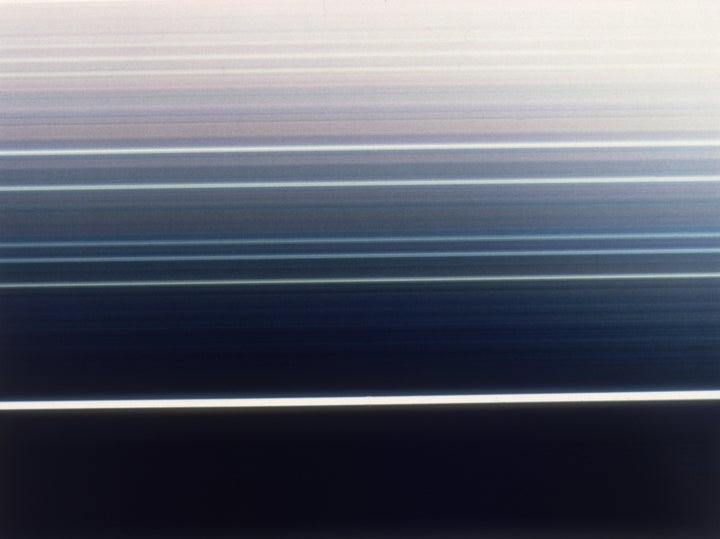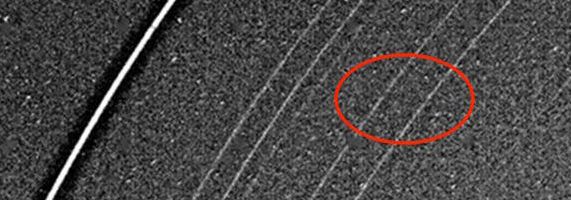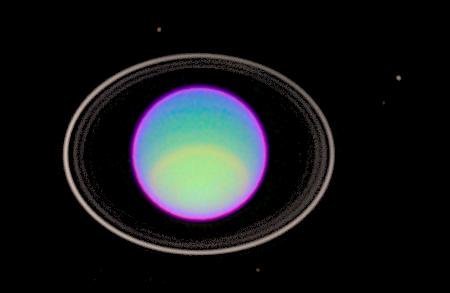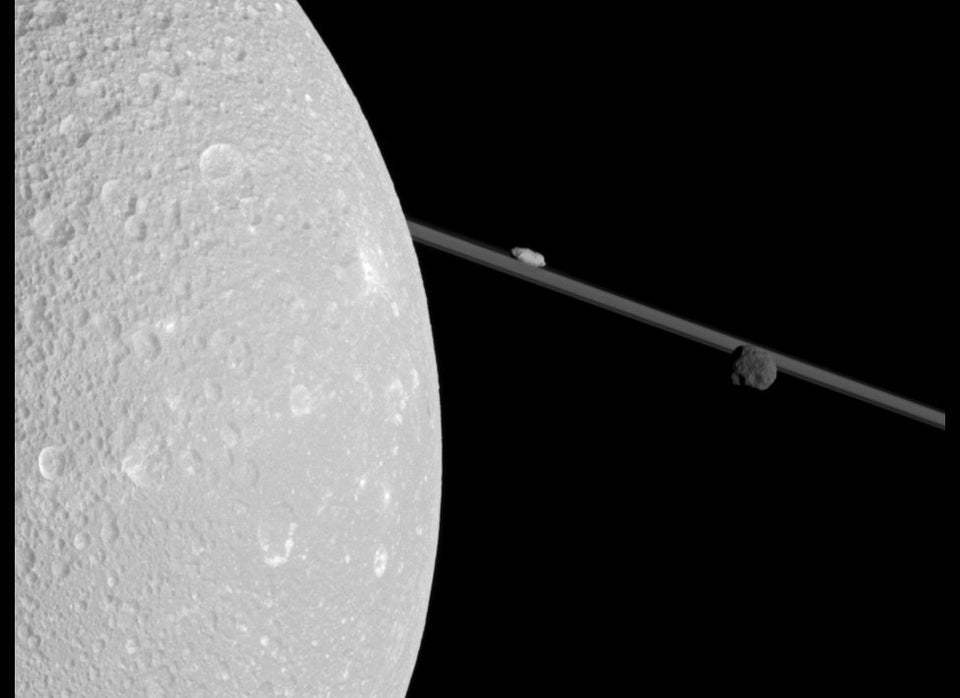
Uranus might have a secret.
A new analysis of data from the Voyager 2 spacecraft, which passed Uranus in 1986, revealed that two of the planet’s rings have a telltale wavy pattern that could indicate the presence of a pair of small moons. These dark moons or “moonlets” would be smaller than Manhattan ― with diameters between just 2.5 and 8.5 miles ― and orbit outside the alpha and beta rings:

“These moons are pretty tiny,” Rob Chancia, one of the two University of Idaho researchers to make the discovery, told New Scientist.
Chancia said the moons were so small that they wouldn’t have been picked up by Voyager’s cameras when the spacecraft passed Uranus three decades ago, coming within 50,600 miles of the planet’s cloudtops.
The moons also might have blended in with the rings.
“Not only are Uranus’ rings dark, so are most of the little satellites that are in that region,” Matthew Hedman, the other researcher involved in the discovery, told the magazine.
“Future Earth-based observations may be more likely to detect these moons” than re-examining the Voyager images, Chancia and Hedman wrote in the article, which was accepted for publication in the Astronomical Journal.

If confirmed, the two moons would be the planet’s 28th and 29th known satellites.
While most moons in the solar system are named for characters in Greek mythology, most of the 27 moons of Uranus have names taken from Shakespeare, including Oberon and Titania, the two largest moons.
Eight of the smaller moons are grouped so closely together that NASA said “astronomers don’t yet understand how the little moons have managed to avoid crashing into each other.”

